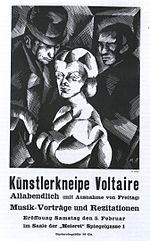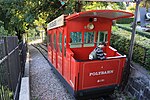Predigerkloster
1231 establishments in Europe13th-century establishments in Switzerland1524 disestablishments in Europe16th-century disestablishments in the Old Swiss ConfederacyBuildings and structures demolished in 1887 ... and 6 more
Demolished buildings and structures in ZürichDominican conventsFortifications of ZürichHistory of ZürichReligious buildings and structures in ZürichRuined abbeys and monasteries

The Predigerkloster was a monastery of the Dominican Order, established around 1234 and abolished in 1524, in the imperial city of Zürich, Switzerland. Its church, the Predigerkirche, is one of the four main churches in Zürich, and was first built in 1231 as a Romanesque church of the then Dominican monastery. In the first half of the 14th century it was converted, the choir between 1308 and 1350 rebuilt, and a for that time unusually high bell tower built, regarded as the highest Gothic edifice in Zürich.
Excerpt from the Wikipedia article Predigerkloster (License: CC BY-SA 3.0, Authors, Images).Predigerkloster
Predigerplatz, Zurich Altstadt
Geographical coordinates (GPS) Address Website Nearby Places Show on map
Geographical coordinates (GPS)
| Latitude | Longitude |
|---|---|
| N 47.3738 ° | E 8.5454 ° |
Address
Predigerkirche
Predigerplatz 1
8001 Zurich, Altstadt
Zurich, Switzerland
Open on Google Maps









